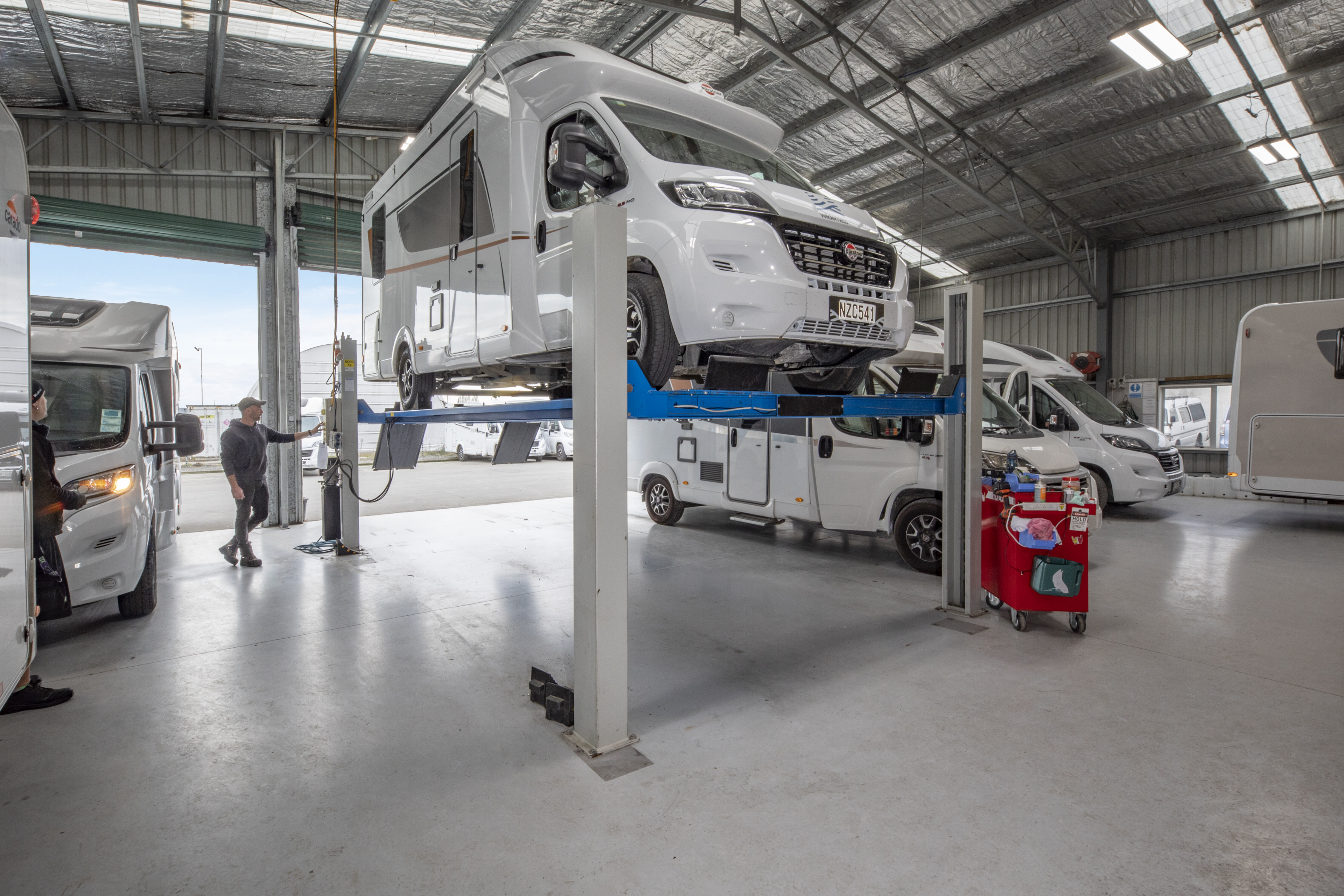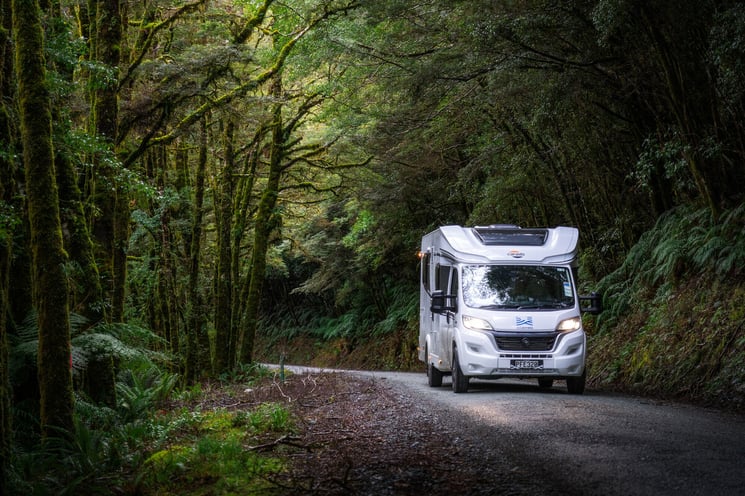
Filled up your motorhome with gas recently? If it wasn’t a shock to the system, it certainly was to your bank balance. World events have driven fuel prices up and they’re unlikely to bring respite anytime soon.
Thinking about fuel efficiency is a smart move — so you can travel more kilometres for your precious dollar. Here we discuss how maintenance, driving techniques, planning trips, reducing weight and your choice of motorhome can all help make your fuel budget go further.
|
Contents |
Purchase the right motorhome
Most motorhomes aren’t very aerodynamic. They tend to have rectangular box shapes which aren’t optimal for fuel economy. However, streamlining can help — planes and high-speed trains are great examples of this.
The key factors that will affect your motorhome’s fuel consumption are:
- Shape — which is related to the class of motorhome
- Motive power — the harnessed energy used to power your motorhome
- Weight — less weight means more fuel efficiency.
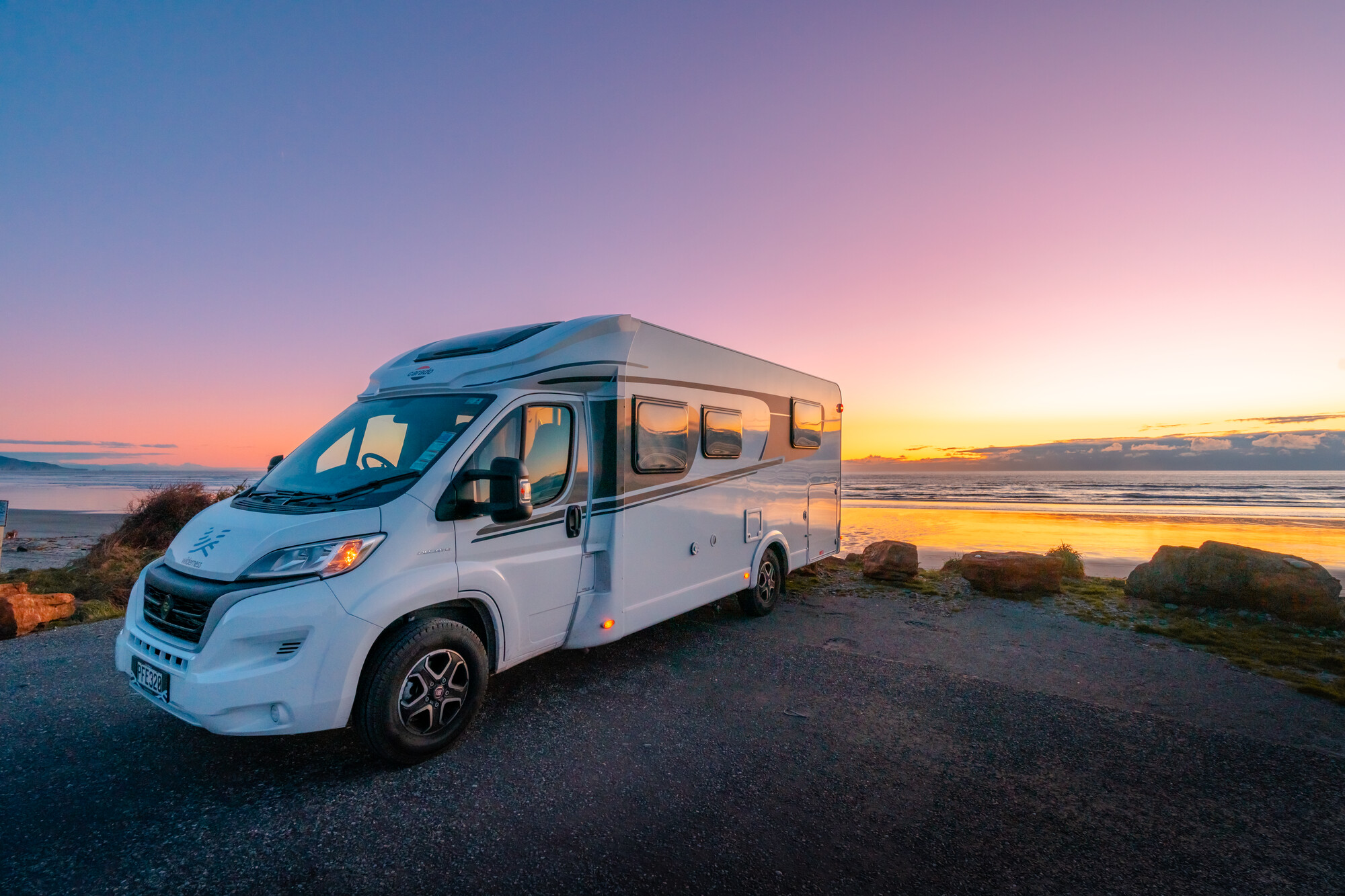
The class of motorhome
The most common motorhome shapes are divided into three main classes — fully integrated, campervans and semi-integrated.
Fully integrated motorhomes also known as A-class are large and spacious but their shape is boxy. Although some manufacturers are making efforts to streamline their fully integrated motorhomes, they generally aren’t the most economical vehicles on the road.
Campervans also known as B-class are often smaller, have less space and naturally have the best gas mileage out of the three classes.
Semi-integrated motorhomes also known as C-class are generally medium-sized and can have a cabover section.
For more information about motorhome body shapes, take a look at the types of motorhomes in New Zealand.
Motorhome motive power
Just about all modern motorhomes are powered by a turbo diesel engine. High-torque diesel engines are well suited to the truck cab chassis which motorhomes are based on.
A fair amount of motorhome motive power used in New Zealand is currently from Europe’s truck manufacturers — and there’s nothing anyone can teach the Europeans about fuel economy.
Motorhome vehicle transmissions also play a part. Most motorhomes produced in the last few years have seven to nine-speed torque converter gearboxes. They operate much smoother and more efficiently than older six-speed Automated Manual Transmissions (AMTs) — undoubtedly affecting driver technique.
Weight and fuel efficiency
The simple equation here is that the less your motorhome weighs, the more fuel-efficient it will be.
It’s difficult to know how large a motorhome you need if you’ve never experienced one. To determine which size and shape work for you and your on-road living requirements, consider trying before you buy.
Regularly maintain your motorhome
Like any vehicle, regular servicing and maintenance of your motorhome will help improve its fuel efficiency.
Modern turbo diesel engines have a considerable number of components, including those related to emission requirements. Everything needs to function properly to ensure an effective engine operation.
To achieve better motorhome fuel efficiency, ensure your:
- Engine is performing well by getting it serviced regularly
- Tyre pressure is correct before each major road trip — underinflated tyres are dangerous and will be a drag on the motorhome
- Engine oil is as specified by the manufacturer.
Hone your driving technique
Another key component for improving fuel efficiency is driver technique. Your habits as a driver do make a difference. For instance, accelerating rapidly from a complete stop burns more fuel than casually getting up to speed.
Drive to the conditions
Anticipate the traffic conditions as you’re travelling between towns and rural roads. Avoid regularly overtaking and peak hour traffic that forces you to stop and start often.
Use a gentle foot
Harsh braking and rapid acceleration when not needed use more fuel. Smooth acceleration and letting the engine brake for you rather than wheel braking all contribute towards saving fuel.
Find your most economical speed
Try doing a few tests to determine your motorhome’s best economical speed. It will usually be around 80–90km but vehicles do differ.
Utilise cruise control on the open road to give you a constant speed — which is handy if you’ve already established your motorhome’s most economical speed. However, if you’re in town or where traffic flow speed varies, it’s safer to turn the cruise control off.
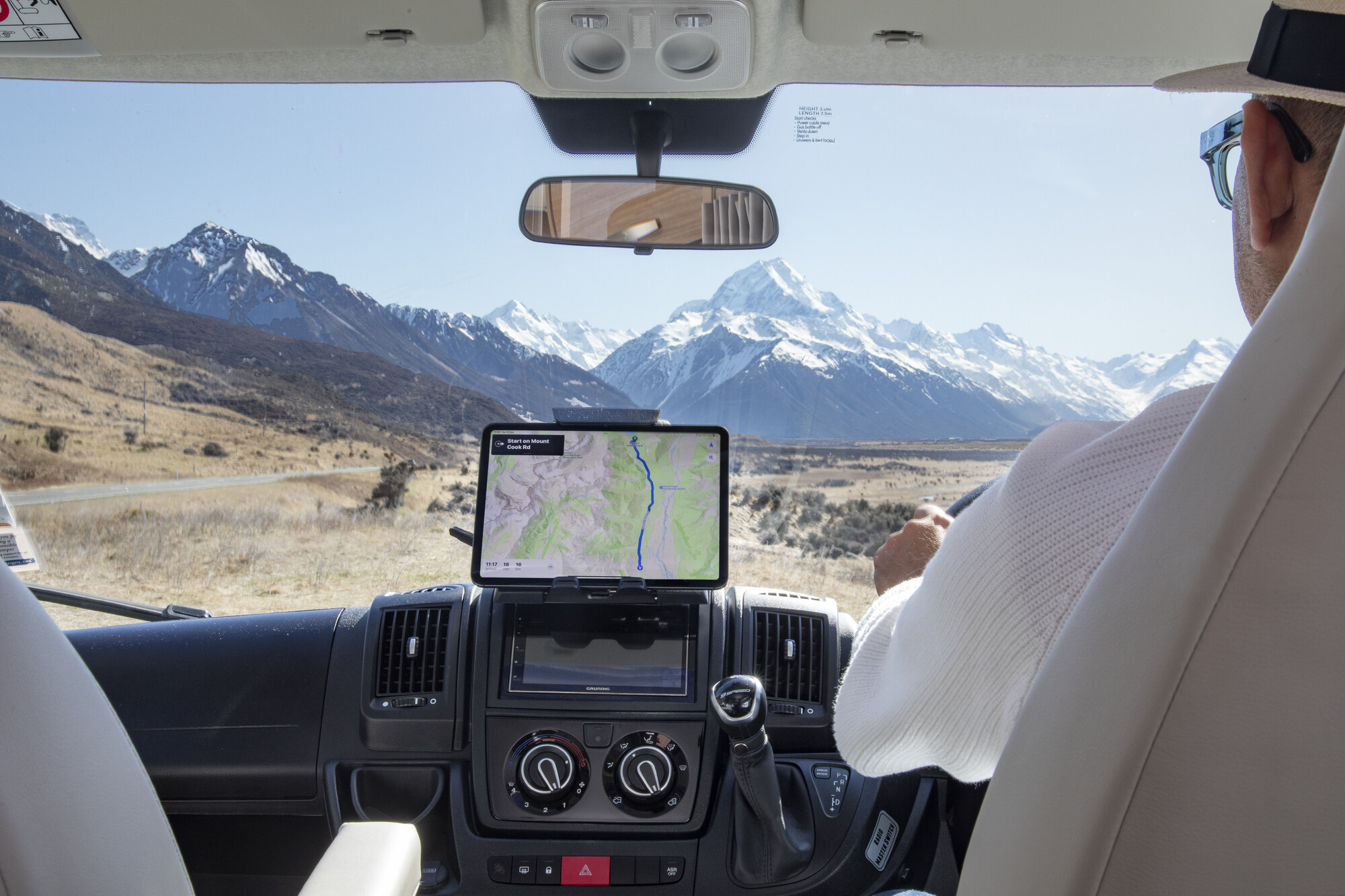
Avoid idling, coasting and a labouring engine
Switch off your motorhome’s engine if you’re going to be idling for more than a few minutes — to save on fuel.
Likewise, change your gears down manually if you have an older motorhome that tends to labour through them. Modern vehicle transmissions handle this well but older ones might need a hand changing down more efficiently.
Coasting is sometimes mentioned as a fuel saver, but it’s not a recommended practice. Apart from the safety risk, modern engines really don’t benefit from it.
Know your motorhome
If you’re a motorhome enthusiast, you may be aware of your vehicle’s maximum power and torque ratings at particular revolutions per minute (RPM). Using this information in conjunction with a tachometer can help with efficiency.
For a manual transmission vehicle, knowing when to shift gears up or down for maximum engine efficiency will be more accurate than simply changing gears by using engine sound.
Plan your trip carefully
Getting lost down some obscure back road might be a heap of fun but you’ll also use extra fuel.
Carefully planning your route so you’re not having to U-turn back to the main road too often while limiting your driving on mountainous terrain will also help improve fuel efficiency.
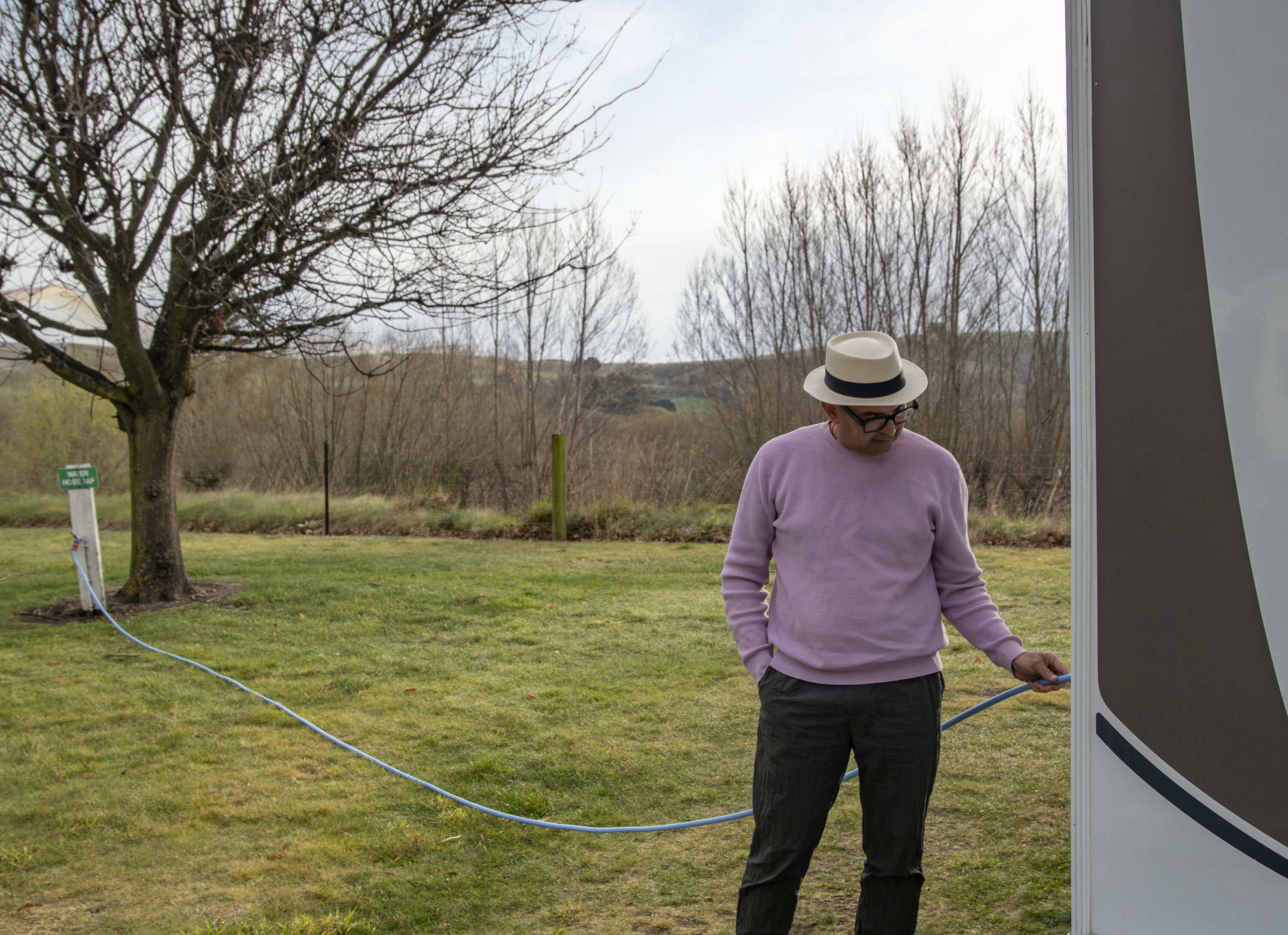
Tips to reduce your motorhome's weight
It doesn’t take long to accumulate a plethora of travel items you might need for every future motorhome trip. But every kilo counts when it comes to the weight of your motorhome — so scheduling an annual stocktake of what’s onboard can be a wise move.
We’ve gathered together some useful tips to help you reduce the extra onboard weight in your motorhome.
- Think seasonal — only carry items that are handy for the season you’re travelling. Winter travel may need extra bedding, heavier clothes and even snow chains. But these things aren’t necessary in the warmer months.
- Remove obsolete objects — do you have old magazines or books lying around or battery chargers for long-gone devices? Offloading this weight has the added bonus of less clutter.
- Consider the weight of water — if you’re planning to go off-grid for a few days, you’ll need a full tank of water. But if you’re taking long weekend breaks at full-facility holiday parks, water is a weight you can easily reduce.
- Review your kitchen utensils — do you really need six mugs when you usually travel as a couple? Are three chopping knives required when one will do most jobs? Kitchen drawers can easily pile up with useless items so now’s a good time to shed some.
- Go lightweight — there may be lightweight options you can swap in such as a lighter mattress, lithium batteries or a curtain instead of a sliding door.
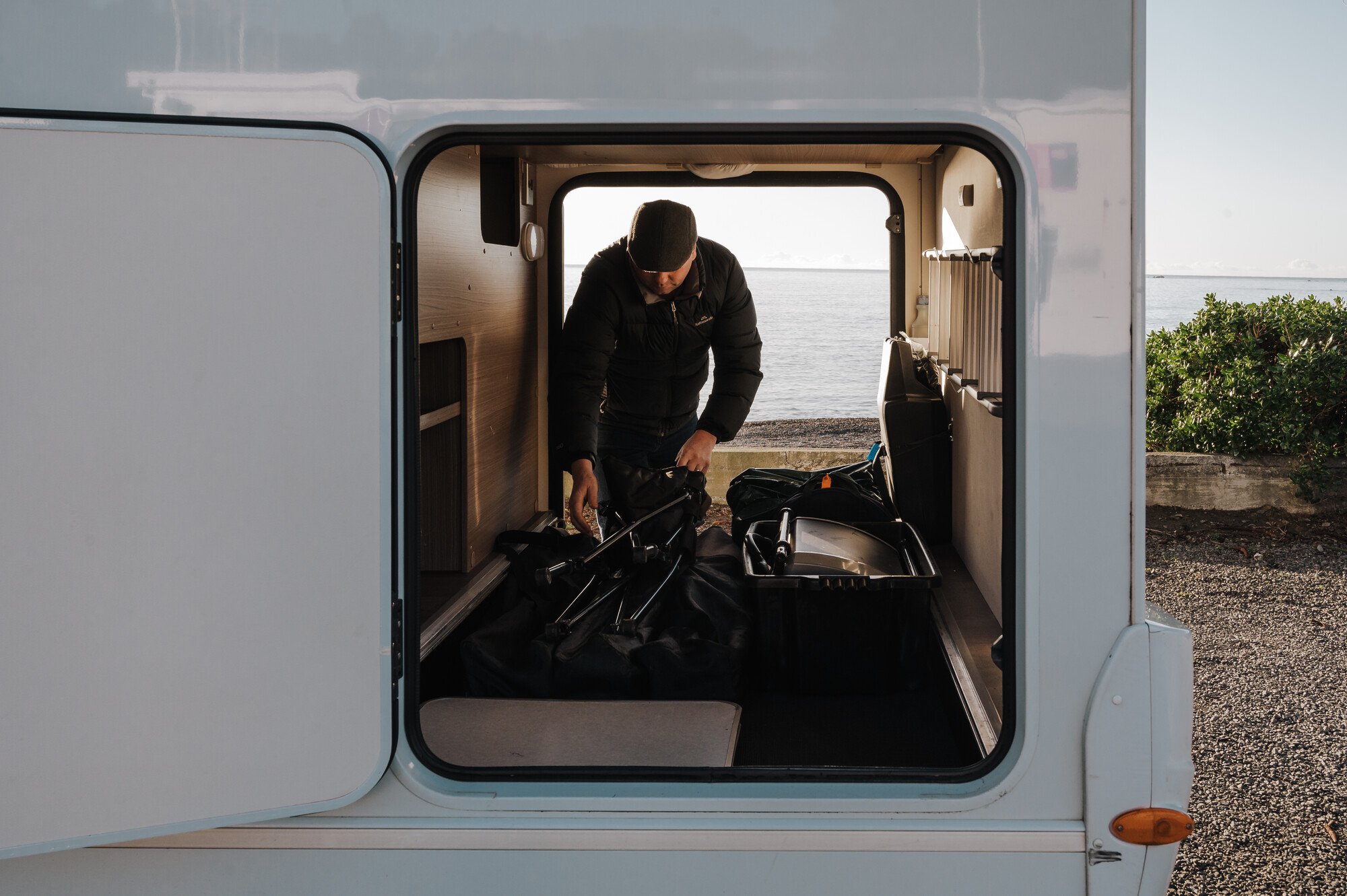
Check out our blog about motorhome weight and payload in New Zealand for further advice on avoiding overloading yours.
Improving fuel efficiency is a hot topic with the current cost of fossil fuels and the increasing awareness of its effects on the environment. Electric vehicles are likely to be some years away before becoming a regular feature in the world of motorhomes. Until then, we all need to do what we can to preserve the magic of motorhoming.
Take a look at where the future is heading for motorhomes and campervans.
